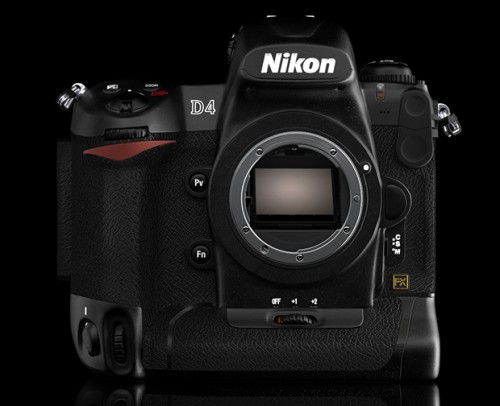
Has the Nikon D4 been leaked? There have been some reports of some individuals having had a chance with the upcoming D4, but details are rather bleak and unconfirmed. Do you think this is the new Nikon D4?

Has the Nikon D4 been leaked? There have been some reports of some individuals having had a chance with the upcoming D4, but details are rather bleak and unconfirmed. Do you think this is the new Nikon D4?

After months and months of rumors on the update to Ricoh’s GR Digital series, the Ricoh GR Digital III is finally here. One of the notable details floated around was indeed correct: the new fast–aperture 28mm f/1.9 GR lens.
Here’s the list of highlights for the GR III:
The GR Digital III is certainly better than the GR II. Unfortunately, there are curious omissions like HD movie recording—it still records in 640×480 pixels! Compared to the Panasonic Lumix LX3, it’s a close battle with the LX3 taking the lead in movie recording and lens performance, at least on paper. More importantly, the GR III is priced above USD $500, making it more expensive than its direct competitors. Unless Ricoh lowers its price, the GR III might just be the same as its GR and GX siblings—good cameras that could’ve sold more.
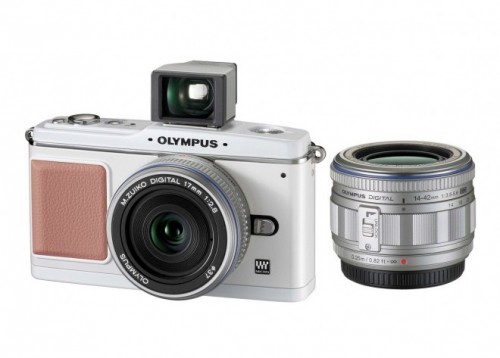
Dubbed by DPReview as the “worst kept secret in the photography industry,” the Olympus E–P1 Digital PEN is finally here to be the compact camera that rivals digital SLRs in quality yet just being as big rangefinder–styled point&shoots like the Canon G10 and the bestselling Panasonic Lumix LX3. Since you’ve probably heard about this from everybody else, I’ll just give you the brief specs of this camera:
Interesting indeed. I have a feeling that this camera is as much a threat to digital SLRs as it is to the LX3, G10, and similar compacts. Unfortunately, buying the E–P1 would require similar investments as if you bought an SLR: lenses will not come cheap and will certainly be a factor in how good your photos can be. It’s a good thing that Olympus intends to release a bunch of fast–aperture primes to complement the Digital PEN, it will surely allow for creative growth for those eyeing this camera. For now, we have to wait for real world sample photos to actually gauge how good it can be, but judging on DPReview’s sample gallery, the Olympus E–P1 might just be this year’s favorite camera.
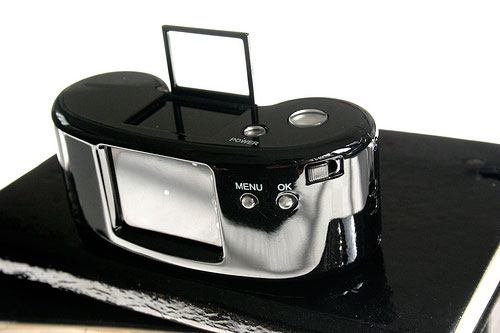
… but it really is digital. The Digital Harinezumi is the first digital camera from Superheadz, a Japanese camera maker specializing in analog cameras very much like nostalgic toy cams that are so popular nowadays. What makes this camera really special is the washed out analog look it produces. Occasionally, light leaks will appear on the images as well as some color shift similar to what’s typically seen in cross–processed film. You’ve got to see photos from the Digital Harinezumi, they definitely look surreal without messing with analog film.
The camera outputs 2 megapixel images and also shoots video that look like 8mm clips, and without sound. The most modern features on this camera are the microSD slot and the rear LCD that can only be used for reviewing your shots—you can’t do live–view with it. You compose and frame your shots using a fold–out optical viewfinder on top of the camera.
Now here’s the bad news: the Digital Harinezumi is only available in Japan, at least officially. And it is sold out. Converting its price in Japan comes out to around $150 USD, not exactly cheap but still reasonable enough for such a fun camera. If only we can get it here in the Philippines.
Sigma Corporation of America has just announced that it is now extending warranties for non-EX lenses. Unfortunately, I’m not sure if this applies to us here in the Philippines since we always get the raw side of things anyway. Here’s the complete press release:
Sigma Corporation Extends Warranty on All Non-EX Lenses Sold by Authorized Dealers
Manufacturer’s New Agreement Lengthens the Total Protection to Three Years Highlighted Links
RONKONKOMA, NY–(Marketwire – May 4, 2009) – Sigma Corporation of America (www.sigmaphoto.com), a leading researcher, developer, manufacturer and service provider for some of the world’s most impressive lines of lenses, cameras and flashes, has enhanced its warranty on all non-EX lenses purchased through an authorized Sigma dealer in the United States from one to three years.
All Sigma Corporation lenses are covered by a one-year international warranty. This new extended warranty will now cover all non-EX lenses purchased through an authorized US dealer for another two years beyond the one-year international warranty, for a total of three years. Customers purchasing Sigma’s EX lenses through authorized US dealers will continue to receive an extended, three-year warranty.
“We select only the most reputable and knowledgeable partners as Sigma authorized dealers, so their customers are already used to getting unmatched support,” said Mark Amir-Hamzeh, general manager of Sigma Corporation of America. “This exclusive, extended warranty makes our dealers the only choice for discerning photographers looking to purchase Sigma products.”
Sigma Corporation has an array of EX and non-EX lenses that have been developed through a combination of experience and advanced technology to provide the best optical performance and smooth handling available. The design and precise engineering of the company’s award-winning lenses, which are compatible with most manufacturers, including Canon, Minolta, Sony, Nikon, Olympus and Pentax, are aimed at helping photographers maximize their true creativity while realizing the full potential of their cameras.
To locate one of Sigma Corporation’s authorized dealers nearest your hometown, visit http://www.sigmaphoto.com/where/where.asp. For information about Sigma Corporation of America, visit www.sigmaphoto.com.
About Sigma Corporation of America
For 50 years, Sigma Corporation’s expertise and innovation has driven the company’s core philosophy of “knowledge, plus experience, plus imagination,” producing high-quality, high-performance photographic technology at moderate prices. This family-owned organization is the largest, independent SLR lens manufacturer in the world, producing more than 40 lenses that are compatible with most manufacturers, including Canon, Minolta, Sony, Nikon, Olympus and Pentax. Sigma Corporation also produces digital SLR cameras and high-definition digital compact cameras. The company is headquartered in Japan, with offices strategically located throughout Europe and North America. For information, please visit www.sigmaphoto.com.
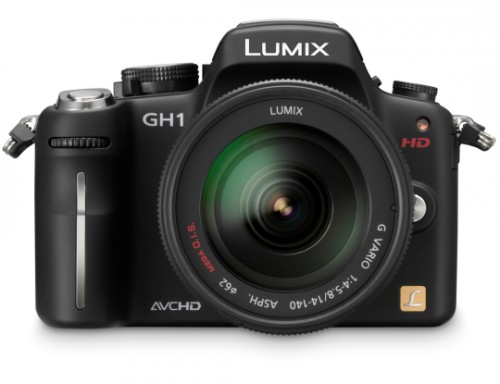
The Panasonic Lumix DMC–GH1 is an update to the micro four thirds–based DMC–G1 with an important feature: HD video shooting! Unlike most digital SLR cameras with video shooting capabilities, the GH1 can continuously autofocus while recording videos. Its contrast–detect AF system allows this capability unlike the phase–detect systems in common digital SLRs like the Nikon D90 and the Canon EOS–5D Mark II. The new 14 megapixel sensor takes some cues from the Lumix LX3 by having various aspect ratios for its images. The GH1 can now do 4:3, 3:2, 16:9, and 1:1 which provides for more creative possibities. If only this retails much less than the cheapest SLR cameras from Canon and Nikon, I just might want one.
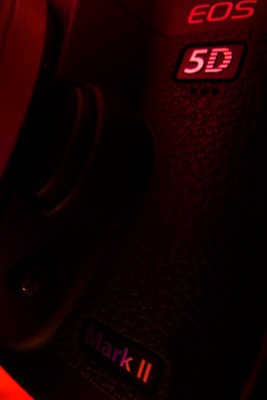
I came across several sites detailing the problems of Canon’s latest full–frame SLR, the EOS–5D Mark II. Sadly, it seems the problem is as widespread as it shouldn’t be.
So should they start selling the 5D Mark II for half the price? :D Seriously though, I hope Canon gets their act together before it affects sales so badly. I wouldn’t be buying this camera even if I could afford it, at least not anytime soon.

Are you in for some friendly competition? There’s a Lumix LX3 Contest blog that gives away some prizes for the best LX3 Dynamic B&W photos. All you need is an LX3, of course!
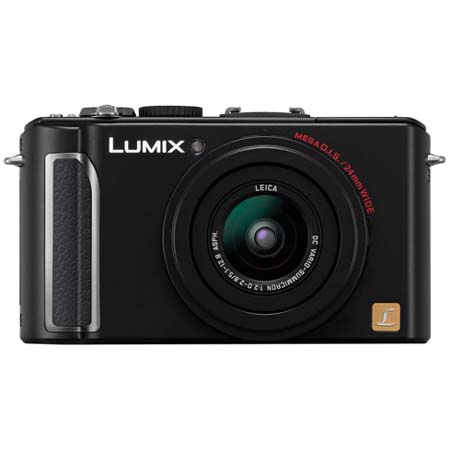
I knew I wouldn’t regret buying my Lumix LX3, and this just confirms it: best enthusiast compact camera! The Panasonic Lumix DMC–LX3 bests some of the more popular brands and cameras like the Canon Powershot G10 and the Nikon Coolpix P6000 and takes the crown among enthusiast compacts. Nice to see a good camera get noticed by the rest of the industry.
Yes, what was just a rumor a few days ago is now an official camera — the Nikon D3X. We had most of the specifications right since Nikon basically gave everything away from the very beginning, except of course for the “official news” tag. It will be everything we’d want in a top–level SLR, and then some. Here’s more of the specs as listed on DCResource:
With the D3 and the D3X at the top of Nikon’s lineup, they’ve now got two full–frame cameras catering to the needs of sports photographers that require fast frame rates and a high–resolution variant for portrait shooters and fashion. This combo appears better than Canon’s 1Ds + 1D pair, which might suggest that the 1.3x crop factor on the quick–shooting 1D series may soon be a thing of the past. If I were Canon that’s what I’d do.
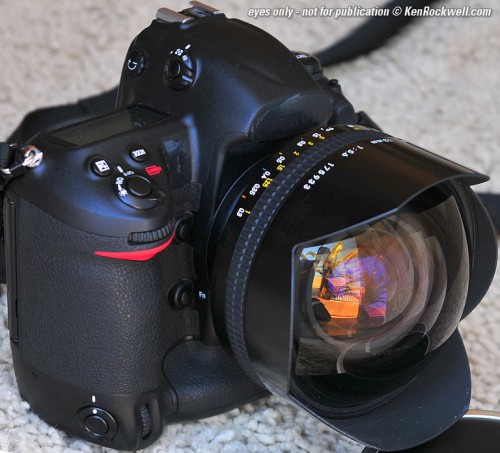
News of a Nikon D3X, an update to the class–leading Nikon D3, has been making the rounds in photography forums the past few days. Ken Rockwell tells us about this with a photo of a cloaked Nikon camera which may be the new D3X. Most likely, the camera in the photo is a D3 but the D3X rumor should be true nonetheless.
Here’s the rumored specifications of the new camera:
Overall, it is basically the same solid Nikon D3 but with a 24 megapixel imaging sensor, putting it at par with Canon’s full–frame digital SLRs. It’s December 1 now here in the Philippines and we should be hearing more about this in the next few hours — if the rumors are true.
There are firmware updates for the just released Canon EOS–50D and the Nikon D300. If you’re shooting with one of them, be sure to check it out as it solves certain issues for both cameras. Of utmost priority is the fix for the 50D which reportedly has “Error 99” issues despite it being a very new camera.

Yes, it’s now confirmed, the Canon EOS-5D Mark II is a real camera! After months (or was it years?) of speculation on how Canon would update the full–frame 5D, it is now finally here. Unfortunately, it’s not even close to the rumored 5D update we wrote about last March.
Highlights of this new camera:
Not to be outdone by Nikon’s D90, movie recording is available at HD 1080p, besting the Nikon which maxes out at the not–too–shabby 720p setting. Certainly, most of the changes are evolutionary, except for the new CMOS sensor which stands out, almost doubling the 12–megapixel model it replaces. And with sensitivity expansion reaching ISO 25600, the 5D Mark II will certainly be in the bags of Canon–shooting pros pretty soon.
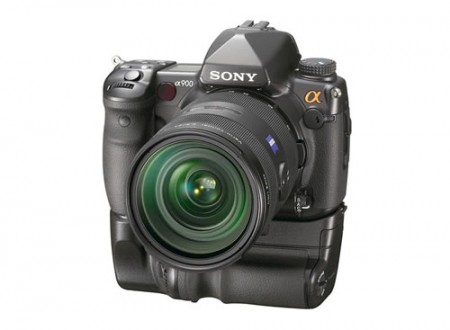
Now the digital SLR market is getting undoubtedly interesting. The recent announcement of a DSLR that can do high–definition videos in the Nikon D90 got everyone listening, and now we have the first full–frame camera for the Sony Alpha system, the Sony Alpha 900. This provides a full–frame option for Minolta/Konica–Minolta shooters as well as those betting on the Sony Alpha DSLR system. Not that I think there are many of those, but having a third full–frame capable system puts pressure on the rest of the market, surely making cheap full–frame DSLR cameras a reality in the next few years.
Sony’s venture into full–frame would make Canon and Nikon think twice about their products, making it no longer simply a technogical race, but also a price–driven battle. And since we know that Sony also sells their sensors to other manufacturers, it wouldn’t be far–fetched to see Pentax and Samsung with full–frame digital SLR cameras in the next few months.
And as if it matters in a big way, here’s the specs for the Sony Alpha 900:
As always, DPReview gets the first stab on this camera with their preview of the Sony Alpha 900.
No, this is not a buyout. It’s just a deal between two prominent names in photography, which simply makes it easier for Getty Images to invite noteworthy Flickr users to add their photos to their catalog.
Strobist has a Flickr/Getty FAQ that helps explain everything.
Canon has officially set the US price for their new entry level EOS Rebel XS at $699 USD. This is for the complete kit that comes with the IS version of the 18–55mm kit lens. The kits will be available in August. Related to this, the updated flash Canon Speedlite 430EX II is also set to retail for $329 USD.
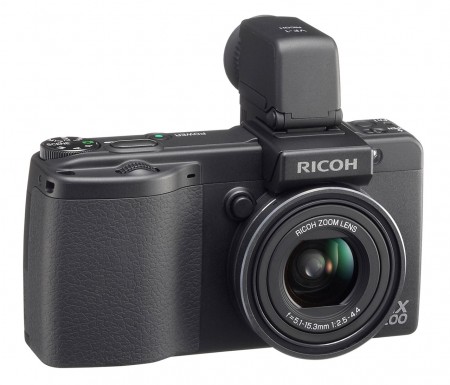
This is the serious enthusiast’s everyday camera. Heck, this could even be the pro’s walkaround camera. The Ricoh Caplio GX–200 is the updated version of the well–received GX–100, a camera that has received positive reviews from discerning photographers.
The GX–200 is mostly the same as the model it replaces, retaining its great features while sporting some new updates:
Ricoh’s recent models have been known to perform well when used as a black & white camera; the GX–200 is no exception and continues the trend. And the good thing about the GX–200 is that it’s very pocketable thus making it very friendly for casual shooting.
If reviews turn out favorable, I just might get a Ricoh Caplio GX–200 soon. ;)

The recent release of the full–frame Nikon D700 has got the DSLR market talking again. Just like how proshooters responded when Nikon surprised us with their top–of–the–line D3, the D700 appears to raise even more interest and should sell more once it starts shipping.
The Nikon D700 is positioned to sell for 3000 USD, right in the range of the aging Canon EOS–5D. Though the camera is not a direct competitor to Canon’s offerings, it sends a strong message to the market that Nikon is back in the game indeed. With two full–frame FX–sensor cameras in just a year, it makes Canon and other digital SLR manufacturers appear lagging behind in terms of product development.
Here are the main features of the Nikon D700:
With the look of things, I think we have a market–changing camera in the Nikon D700. This should get Canon evaluating their product development plans as the market clamors for more value in their cameras. I truly believe the Nikon D700 will be one of the most used cameras in recent times.
Here’s more coverage on the Nikon D700 from Michael Reichmann and Rob Galbraith.

This is rather late news since every other photography site actually tried to scoop everyone else, but it’s still worth mentioning that Canon has just announced their entry level Canon EOS–1000D which will also be known as the Digital Rebel XS. Quite obviously, this camera is a response to Nikon’s three–headed entry–level team composed of the D40, the D40X, and the D60.
Anyone who’s familiar with Canon’s digital SLR lineup would surely notice that the EOS–1000D is a cross–breed of the older 400D and the current 450D. It carries a 10–megapixel CMOS sensor, 3 FPS continuous shooting, and a 2.5–inch LCD, features that were upgraded when Canon released the 450D. The body and button layout are inherited from the 450D, including the image–stabilized kit lens, but some features are clearly limited to make it a lower camera compared to the 450D. A blatant non–existent feature is the sensor found just under the optical viewfinder of the 400D and the 450D; this means that the rear LCD will most likely behave similar to Nikon’s models — you have to manually turn them off when you take them to eye level.
The introduction of this model is an interesting twist in Canon’s lineup, raising the doubts on the market value of the 450D since it is just marginally better than the 1000D. For less money, you get a camera of almost the same usability and value. If I were looking for a backup camera on a limited budget, I won’t hesitate picking the 1000D over the 450D. For first–time digital SLR owners though, it is too close to call and would largely depend on your budget and deals offered. Either way, you still get a perfectly usable camera. I think Canon just introduced another great seller in the EOS–1000D, I just hope it isn’t at the expense of the 450D.
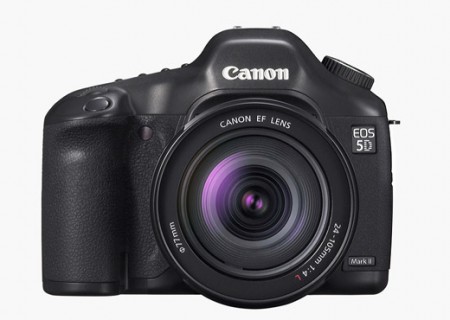
Speculations are alive about the reported replacement for the overdue Canon EOS–5D, expectedly marked as the Canon EOS–5D Mark II. Not necessarily revolutionary, the leaked specs still suggest a modest upgrade from the first generation full–frame digital SLR. As said in the DP Review forums:
The new 5D II will not be released at Photokina, but instead will be a surprise announcement on April 22, according to a source I am unwilling to disclose. The specs of the new camera are as follows (final name unavailable):
- 15.3 MP full frame CMOS sensor (vastly improved light-gathering capacity per pixel: improved micro lenses; miniaturized micro circuitry; enhanced signal/noise ratio)
- Weather sealing same as 1Ds Mark III
- Dual Digic III with all-new “CXR” NR system reported to best 3rd party NR software. Available as a C.F with 4 levels of customizable parameters.
- 14 bit A/D conversion
- ISO 12800 (C.F. up to 25600)
- Reported 1 2/3 stop sensitivity improvement
- All-new 29-point TTL CMOS sensor with 12 cross-type for F/2.8 or faster lens (35% faster than 40D)
- Micro lens fine adjustment for up to 14 lenses
- 300,000 exposure shutter durability
- 6.0 / 3.0 fps
- 3.0″ LCD, 922,000 pixels
- EOS Integrated Cleaning System
- Live View (improved from 450D; latest generation)
- 6/3 fps continuous shooting for up to 68 frames
- MSRP $3499, available June 2
With this long list of realistic enough details, it seems the leaked info may prove to be true. What I’m not too happy about though is the ~$3500 USD price tag, putting it much higher than the first 5D. Quite unusual since Canon’s digital SLR line has a history of decreasing prices for newer and better models. $2500 USD would’ve been more right and puts it in a reasonale range compared to offerings from other DSLR makers.
But wait, is this really the Canon EOS–5D Mark II?